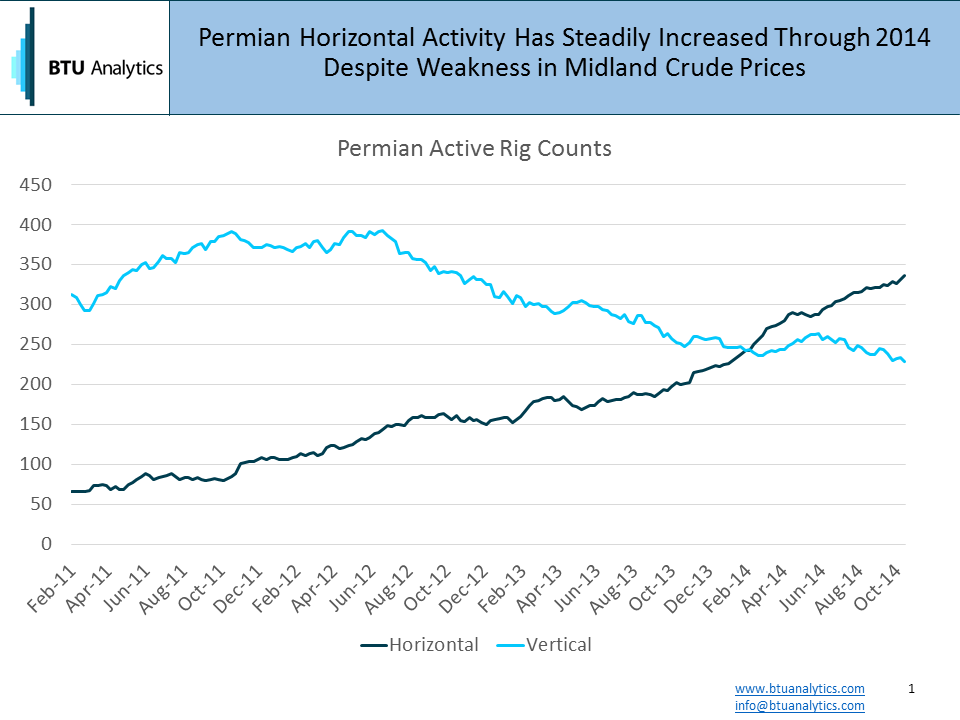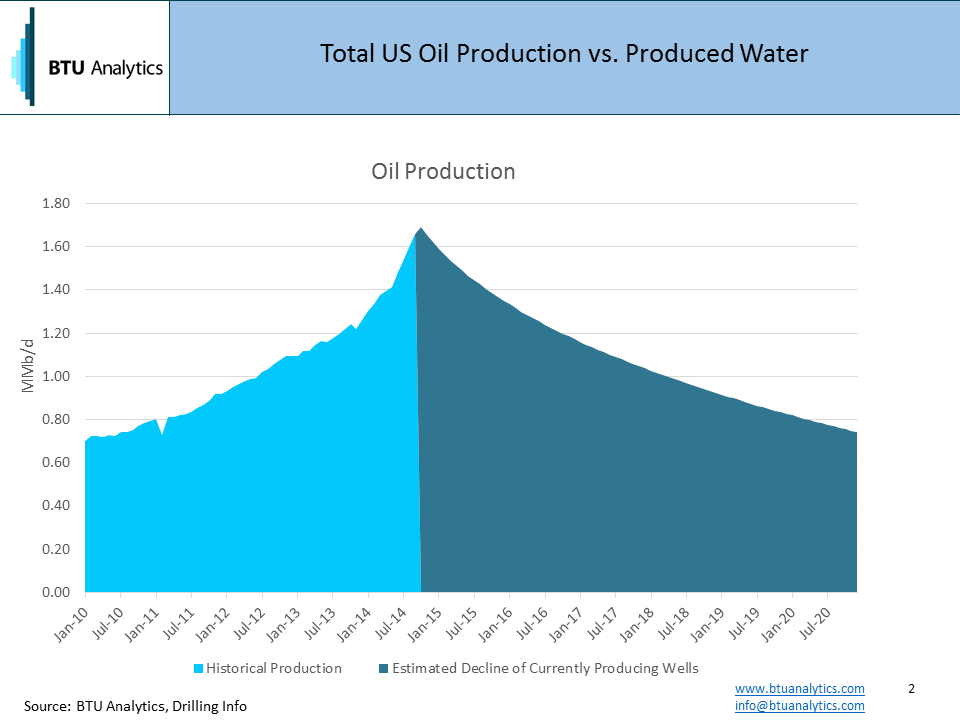With all the focus on the recent drop in oil prices and valid concerns that lower oil prices could be on the way without sharp corrections in drilling activity around the globe, we decided to ask the question: What if drilling activity shut down in one of the largest producing basins in the world, the Permian Basin?
Higher oil prices, advancements in drilling and completion techniques, and the ability to target multiple oil rich formations began fueling a resurgence in oil activity in the Permian before oil prices crashed in 2009. The Permian quickly recovered and by mid-2012, more than 530 drilling rigs were active in the play driving oil production higher and spurring the announcements of over 1 MMb/d of new oil pipeline takeaway capacity by Plains, Bridgetex, Sunoco, and Magellan.

Vertical wells have long been the lynch pin of Permian crude production, but now horizontal drilling activity, targeting primarily the Wolfcamp and Bone Spring formations across the Delaware and Midland basins, has reached an all-time high. Last week, Permian horizontal rig count reached 336 rigs according to data compiled by Baker Hughes. The record rig count comes despite a greater than $10 fall in crude prices over the last several weeks. Despite the drop in crude prices, BTU Analytics doesn’t expect the horizontal rig count to fall any time soon. In fact, if crude prices quickly recover, Permian horizontal rig counts could increase by another 50-100 rigs in 2015.
Since Wall Street and traders alike are watching for any sign that producer activity is slowing in the wake of lower crude prices, we decided to dissect the data in our production models for an answer to the question – what if rig activity stopped tomorrow? Just how much production would we have in a year or in five years from the Permian?
In the September issue of the US Upstream Outlook, BTU estimated Permian Basin crude more than doubled since 2010 to 1.7 MMb/d in October 2014. If production continues along this sharp upward trajectory, crude oil volumes could surpass 3 MMb/d within the next several years. However, the question posed was “what if drilling activity goes to zero?” Before answering this question it is important to take a quick look at BTU’s model for production.

In order to estimate future oil and gas supply, BTU Analytics has developed proprietary models forecasting both oil, gas, and water output at a micro-level. For example, BTU aggregates well-level production into five sub-regions for the Permian Basin. For each sub-basin, BTU has developed estimated type curves from state reported well results for vertical and horizontal wells. After developing type curves and assumptions, BTU Analytics applies these to individual wells in the region taking into account the number of years online and the current production rate of each well.
Utilizing the model described above and applying it to the Permian Basin, BTU Analytics estimates currently producing wells will decline from 1.8 MMb/d to 1.4 MMb/d of oil production a year from now and still contribute over 0.8 MMb/d of oil production five years from now.
Let that sink in a for a minute… five years from now, even if no new wells are drilled, the Permian Basin will still be producing as much crude oil as it used to in early 2011. With production currently on a steep incline racing towards 3 MMb/d, it would seem the US needs to see some pretty drastic reductions in drilling in the Permian Basin to stem the tide of growth.








